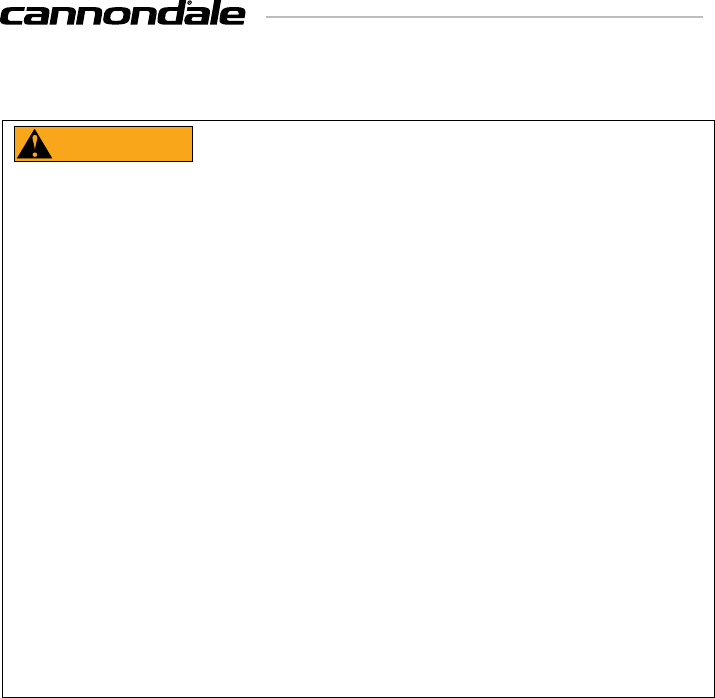
6
Tire Size
WARNING
OBSERVE THE “MAXIMUM TIRE WIDTH” FOR YOUR BIKE FOUND IN THE SPECIFICATIONS
PAGE OF THIS MANUAL.
Mounting the wrong size tires can result in the tires hitting the fork or frame when riding. If
this happens, you can lose control of your bike and you can be thrown o, a moving tire can
be stopped because it touches the fork or frame.
Do not mount oversized tires, ones that rub or hit the fork or frame, ones that result in too
little clearance, or ones that can hit the fork or frame when the suspension is fully compressed
or when riding.
Take care that the tires you select are compatible with your bike’s fork or frame design. Also,
be sure to follow the manufacturer’s recommendations of your front fork and rear shocks.
When you are considering tires for your bike consider...
The actual measured size of a tire may be dierent than its sidewall marking. Each time you
mount a new tire, take the time to inspect the actual clearance between the rotating tire
and all parts of the frame. The U.S. Consumer Product Safety Commission (CPSC) requires at
least 1/16” (1.6 mm) tire clearance from any part of the bike. Allowing for lateral rim ex and a
wheel or rim that is out-of-true will likely mean choosing a rear tire that provides even more
clearance than the CPSC recommends.
ASK YOUR CANNONDALE DEALER FOR THE RIGHT TIRES FOR YOUR BIKE AND ITS
PARTICULAR COMPONENTS!
YOU CAN BE SEVERELY INJURED, PARALYZED OR KILLED IN AN ACCIDENT
IF YOU IGNORE THIS WARNING.


















